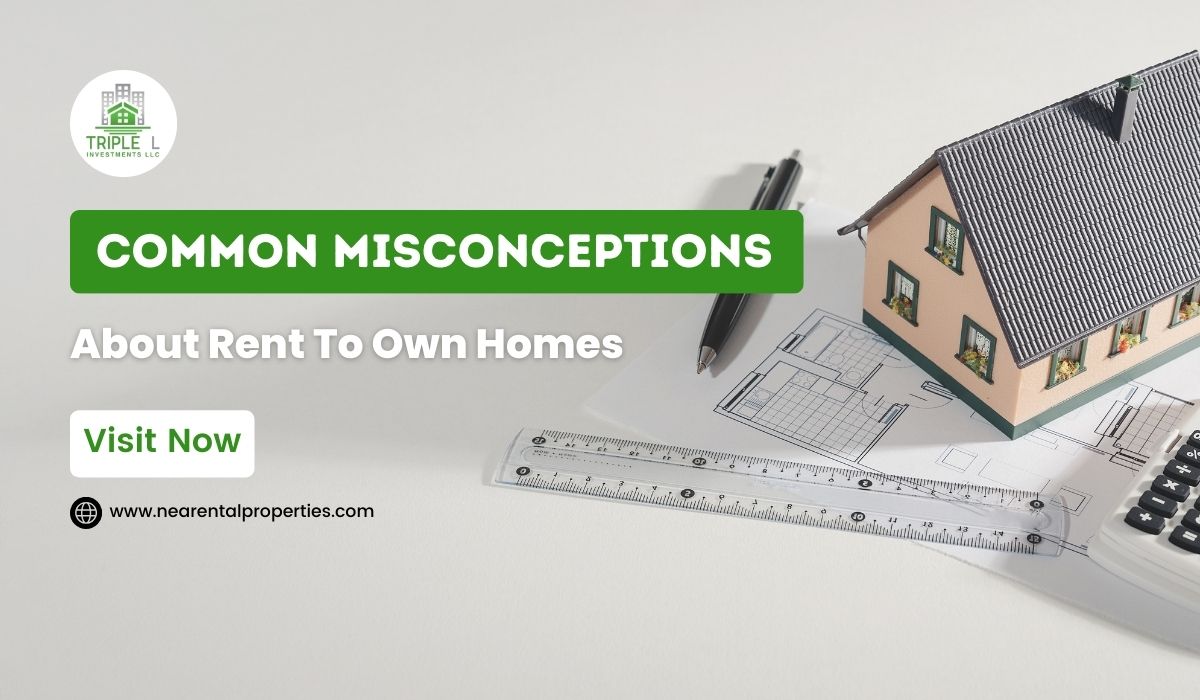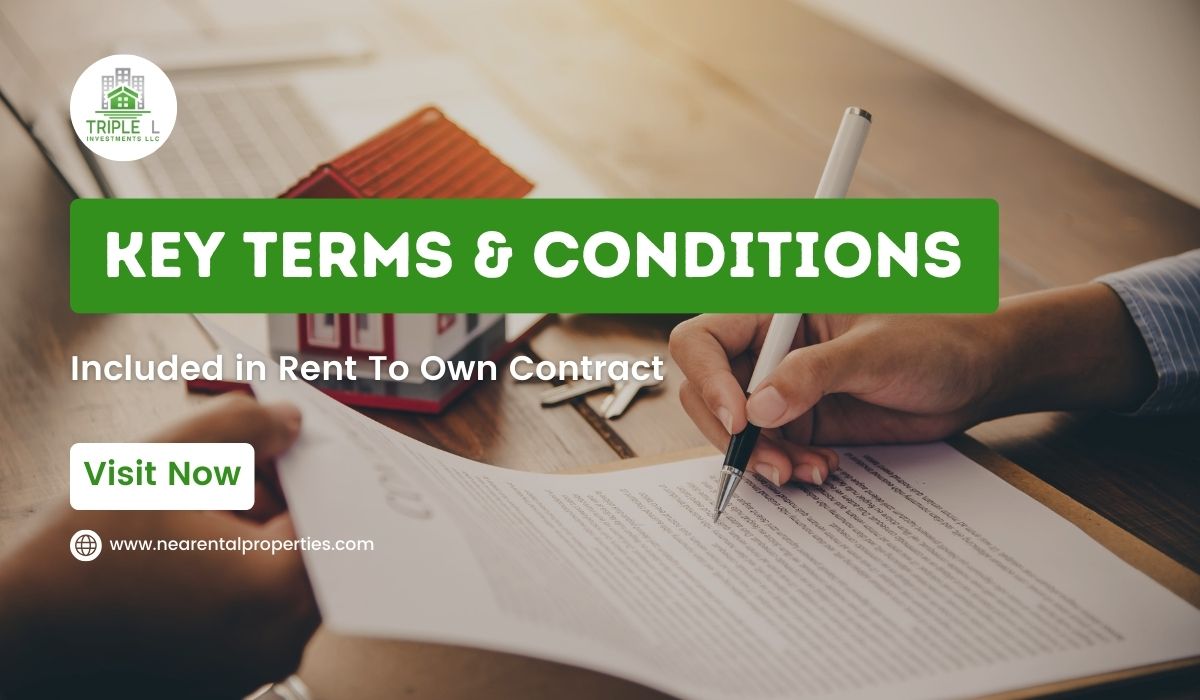Rent-to-own homes are becoming more popular as an alternative to homeownership, yet misunderstandings continue, confusing potential homebuyers.
To better understand rent-to-own, we need to dispel these myths. This essay debunks some of the most frequent rent-to-own home myths to shed light on this unique housing arrangement.
By dispelling these fallacies, prospective homebuyers can make better judgments and manage the rent-to-own process with confidence. To educate homebuyers, let’s examine these myths and rent-to-own reality.
Main Misconceptions about Rent-to-Own Homes
Renting is the Same as Owning:
Many people mistakenly believe that rent-to-own and renting are the same because they need help understanding the key differences.
Neither leases a property, but rent-to-own arrangements allow tenants to buy it after one or three years. Rent-to-own arrangements allow tenants to become homeowners, unlike traditional renting gradually.
Rent-to-own tenants can earn rent credits to buy the property. Understanding the pros and downsides of each housing arrangement helps people make informed housing choices.
Rent-To-Own is Always the Best Option:
Potential homeowners may be disappointed if they think rent-to-own is always good. Rent-to-own arrangements offer financial flexibility and the chance to become homeowners gradually, but they are only sometimes beneficial. Remember that a rent-to-own agreement’s desirability depends on financial stability, housing aspirations, and the agreement’s parameters. Rent-to-own has risks and may not be right for everyone.
Purchase price, rent, upkeep, and market conditions can affect the arrangement’s value and practicality. Thus, before choosing rent-to-own, prospective buyers must study, consult professionals, and thoroughly assess the agreement’s terms and implications.
By eliminating the myth that rent-to-own is always a good deal, potential homebuyers may make informed decisions that fit their long-term housing objectives and finances.
Rent-to-Own Contracts are Complex and Risky:
Potential homebuyers generally avoid rent-to-own agreements because they think they’re complicated and risky. Rent-to-own arrangements may appear complicated, but with proper direction, they can be managed. These lease-to-buy agreements allow tenants to test-drive a home before buying. Communication and due diligence between renters and landlords reduce legal and financial risks. People with bad credit or little funds can become homeowners by eliminating the myth that rent-to-own agreements are intimidating.

People with poor credit can't rent-to-own:
There is a common misconception that rent-to-own homes are only available to those with bad credit. In contrast, rent-to-own agreements serve a wide range of homebuyers, regardless of credit. Rent-to-own arrangements can help repair credit, but not just for those with bad credit.
For those with different financial situations, rent-to-own homes offer an alternative to buying. Potential homeowners who rent-to-own can overcome mortgage approval hurdles, save for a down payment, or explore housing options. People can make informed housing decisions by dispelling the myth that rent-to-own is only for those with bad credit.
Rent-to-Own Agreements Are Not Legal:
The assumption that rent-to-own agreements are not legally binding causes confusion and hesitancy among potential tenants and landlords. Despite popular assumption, rent-to-own arrangements are legally binding contracts that explain both parties’ obligations.
These agreements are legally binding, like lease or purchase contracts. Key elements of rent-to-own agreements include the lease period, option fee, purchase price, rent payments, maintenance, and termination provisions. Tenants and landlords must recognize that violating the agreement can have legal ramifications. People should feel confident about approaching rent-to-own agreements after dispelling this myth.

Overpriced rent-to-own homes:
Because they need to understand what determines home prices, they think rent-to-own homes are overpriced. A rent-to-own agreement may set a higher purchase price, but it does not overprice the property. Rent-to-own agreements typically negotiate the purchase price upfront and maintain its fixed status throughout the lease period.
Tenants have price certainty and security against property value increases with this stability. It is also possible to use each rent payment as a rent credit when purchasing a property. Rent-to-own houses are affordable as long as tenants understand the purchase price and dispel the myth that they are.
Equity Building Doesn't Exist:
There is a misconception among tenants that rent-to-own agreements do not build equity. Rent-to-own arrangements allow tenants to gradually acquire equity in the property, contrary to popular opinion. A rent-to-own agreement may designate a portion of each monthly rent payment as a rent credit accruing over the lease term.
Rent credits force tenants to save for a down payment or buy. If property values rise during the renting period, tenants may gain equity, strengthening their finances. By knowing how rent-to-own agreements develop equity, tenants can appreciate this homeownership pathway and refute equity-building myths.
Financially restricted buyers must rent to own:
Many people think rent-to-own homes are their only option. People with bad credit or low savings need help getting home loans from traditional lenders. Rent-to-own arrangements can help some become homeowners, but there are other options. Alternative finance and aid initiatives are available for people in different financial situations.
First-time homeowners and individuals with poorer credit scores can use government-backed loans, down payment assistance programs, and customized mortgage products by dispelling the idea that rent-to-own is the only choice for homebuyers with financial constraints. Consumers can find a cost-effective homeownership solution while meeting their financial needs.
Conclusion
As we conclude our discussion of rent-to-own home fallacies, we must dispel them and explain the facts. Rent-to-own agreements have different benefits than typical renting, despite popular opinion. We must dispel myths about rent-to-own agreements’ complexity, riskiness, exclusivity, and high prices in order to understand them better.
We can also dispel myths about rent-to-own agreements’ legality, equity-building opportunities, and affordability. Dispelling these myths helps people make informed rent-to-own home decisions and navigate the housing market with confidence.
Frequently Asked Questions
Contrary to traditional renting, rent-to-own agreements allow you to purchase the property at the end of the lease term.
During the lease term, tenants may buy the property but do not have to do so.
Depending on the terms of the agreement, tenants may lose the option fee but not necessarily all payments.
It does not matter what your credit score or financial situation is; rent-to-own homes can be beneficial to you.
Even though rent-to-own agreements have higher initial costs, they can increase equity and flexibility.
Tenants’ rights are similar to those of traditional renters, depending on the terms of the lease and the reasons for the eviction.
In general, tenants are responsible for maintaining their properties, just as homeowners are.
Tenants and landlords can negotiate terms such as purchase price, rent credits, and maintenance duties.










